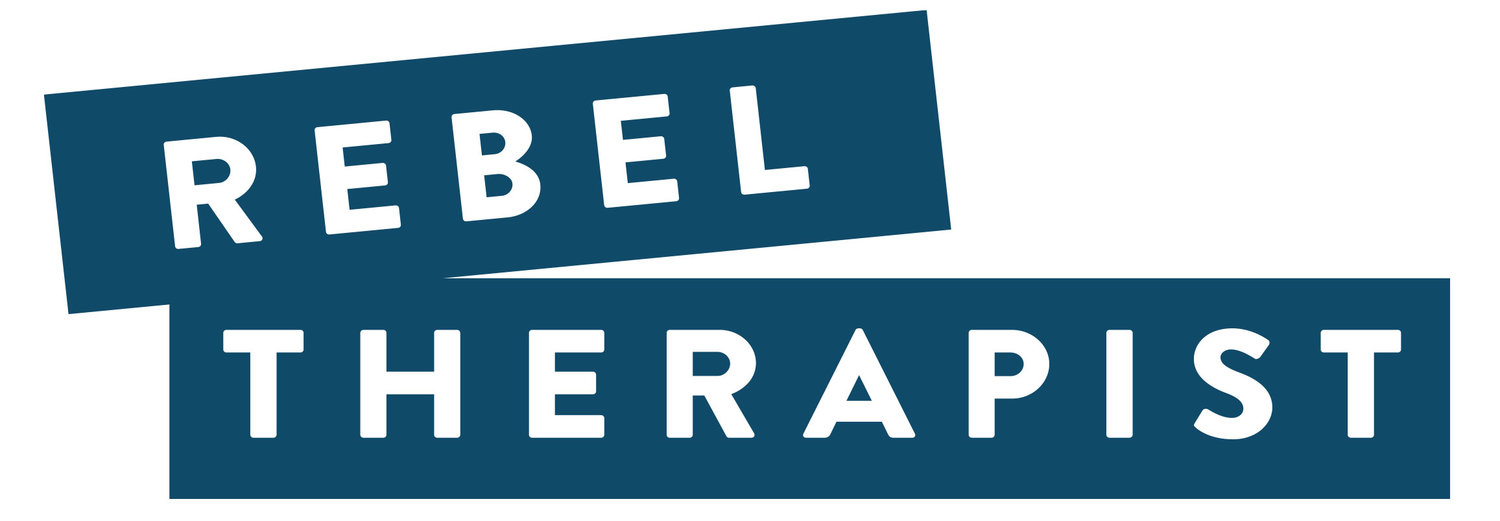I’ve been posting about writing a therapy blog for the past few weeks, addressing the most common concerns that come up. In part 1, I discussed what to write about. Most bloggers deal with panic as they face a blank page at some point. I shared some tools for idea generation and ways to store those topics so you don’t forget them. In part 2 I talked about finding your voice as a therapy blogger, and I encouraged you to experiment and think through some key questions. Today I’ll write about mindset problems that come up for therapist bloggers.
Your mindset will mess with you at some point when you’re writing a regular therapy blog. Here are some of the sabotaging thoughts that make appearances for many of the therapist bloggers I work with:
“No one wants to hear what I have to say.”
“I am an imposter or a fraud.”
“This has been said before.”
Here are some ways to respond to those negative thoughts. Think of them as hacks for getting through them and holding on to your sanity.
Sabotaging thought: “No one wants to hear what I have to say.”
Response: Your therapy blog is a lot like your therapy practice. It’s not for everyone. Your work is for a particular group of people who really need YOU, who are in pain or who are hoping for a particular outcome and are turning to you to guide them or facilitate that process. Those people want and need to hear what you have to say. Many of them are hungry for it. Your intended blog readers are the people who might want to work with you, but first would like to read your blog. Some of them will read one article, and some will read your articles for months before they are ready to call you.
You are writing this blog to help the right people find you. You’re NOT writing this blog so that you become the next internet sensation. Your blogging is not meant to create a huge following. It’s meant to express your message in your unique voice, and your ideal clients do want to hear that.
Sabotaging thought: “I’m a fraud.”
Response: You’re honest in your blog. You are in fact a therapist. You help people. You’re not claiming to have invented this field or the methods you use. You should also know that imposter syndrome comes up because you’re doing something new and stretching yourself. Try to make friends with it, because every time you do something brave and wonderful, that imposter syndrome will show up at the door. Eventually “I’m a fraud” won’t show up as often when you blog… but it will show up again when you stretch in a new direction.
Sabotaging thought: “This has been said before.”
Response: In your therapy practice, you don’t put pressure on yourself to come up with something completely new in every session (at least I hope you don’t!) It’s very rarely possible to come up with something completely new anymore. All of the information you’re offering is available in other places. Your readers aren’t looking for brand new information as much as they want your perspective on the topic. For example, your ideal client has already heard that using meditation helps with anxiety, but when she reads YOUR article about meditation, she may feel for the first time that she’d like to give it a try. Perhaps your sense of humor or the examples in your article help her feel a new sense of hope.
Here’s an extra tip: You can’t maintain a blog without support, and you don’t have to. Some ways to get support are to talk to other therapist bloggers, work with a business coach, or set up a relationship with an accountability buddy.
If you’re ready to build a unique therapy practice, apply for a free 20-minute phone consultation now.










